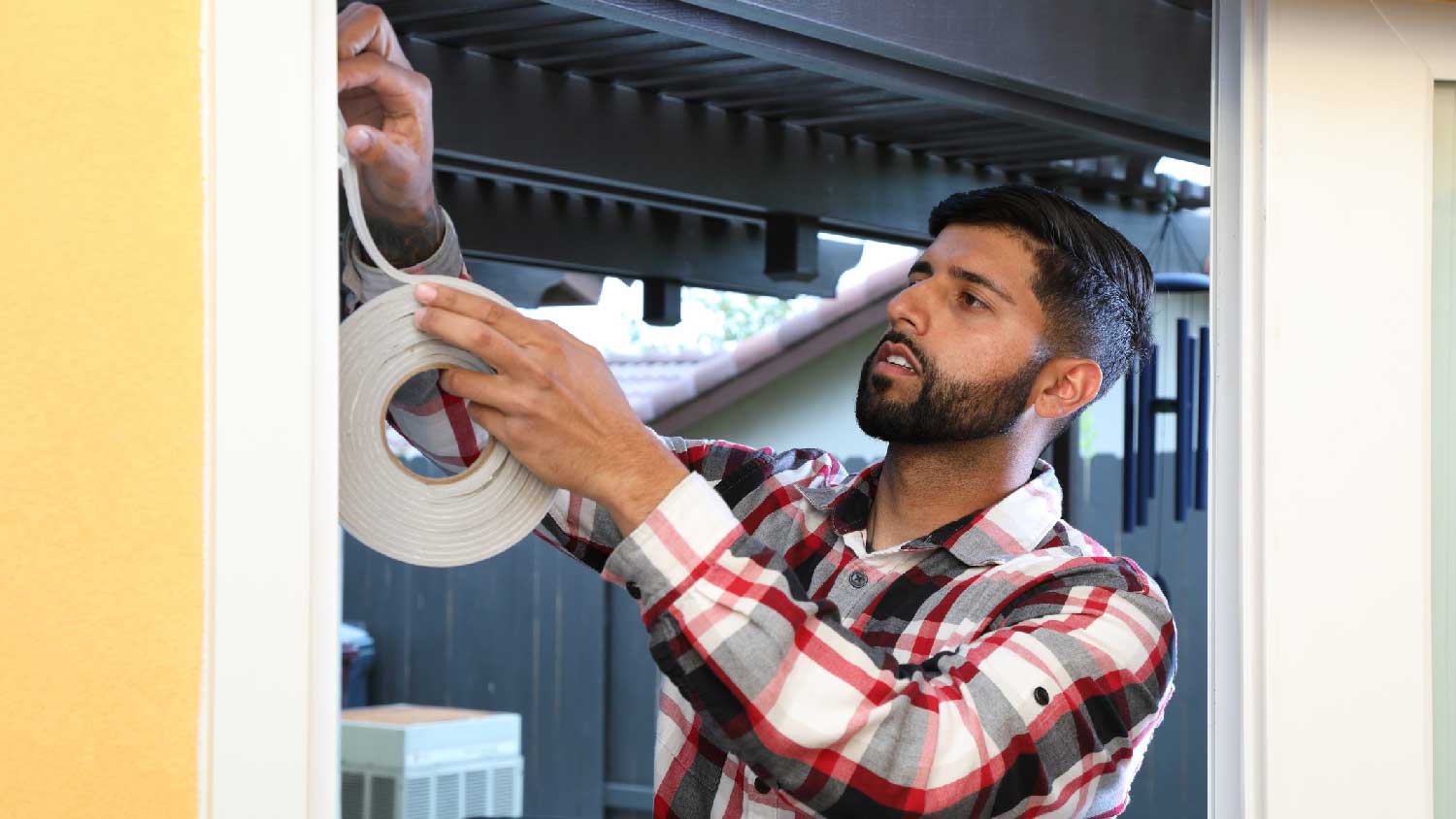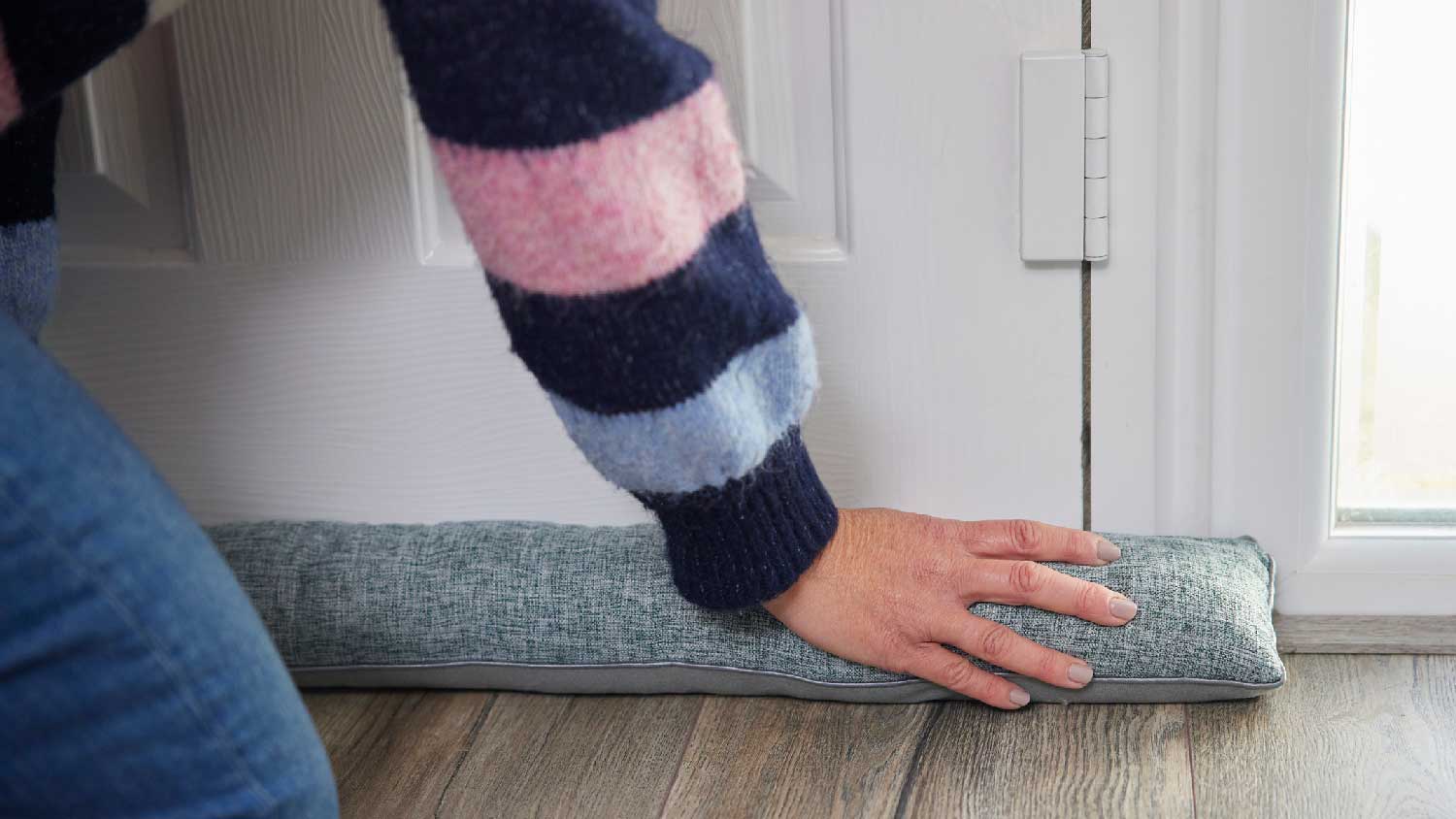How to Insulate a Door
Insulate your hollow entry door in a snap with these insulation tips


Insulating your hollow door can be an easy DIY project if you don't mind handling a few basic materials.
The first thing to know is that drafts can get in easily if your door isn't mounted properly. If you hire a professional, the average cost to fix a door is around $230.
While most insulation tips can be done without experience, a few do require you to unmount and remount a heavy door.
Insulation options include new hardware, weatherproofing materials, foam, and boards.
Learning how to insulate a door is one of the tricks to keeping drafts and moisture out of your home. A properly insulated door can also lower your energy bills by helping to maintain a consistent temperature inside your house. You might be wondering what it takes to seal up your home's doors to save throughout the seasons. These seven tips for insulating a door will help you get a handle on this project.
Correctly installing insulation can be difficult. Health and safety risks are involved; therefore, we highly recommend contacting a pro to ensure the job is completed safely and correctly.
1. Check Your Hardware and Door Stability
Did you know that you may be able to make your entry door significantly more efficient simply by checking all of your mounting hardware and screws? Over time, hinges and handles can loosen. This creates little passageways for air to get into your home. If your door is hanging perfectly straight in the frame, this is a telltale sign that your door needs to be straightened. The cost to fix a door is $231 on average.
2. Add a Weather Seal

A weather seal is an easy, cost-effective option for insulating your home's entry doors. Following this tip is as easy as adding a store-bought weather seal along the bottom edge of a door. Weather seals work by closing the gap that is often found between the door and the floor. While small, this gap can allow outside air to creep into your home.
Weather seals don't just help to regulate indoor temperatures. They can also stop bugs, dust, and debris from getting swept into your home with the breeze. The key to installing the right seal is choosing a product that's the right size for your door.
3. Insulate the Inside of a Door
While most easy insulation hacks involve closing gaps that have formed between the door and frame, one of the best ways to block drafts is to insulate a door's interior. This DIY task requires a bit more technical knowledge compared to surface-level fixes. The time investment is also steeper. If you're thinking of doing a whole-house insulation project, spray foam insulation cost ranges from $1,409 to $4,145. When you start looking at insulation options for more than your door, you get into the territory of selecting an appropriate insulation R-value based on your home's style, size, and location.
How do you insulate a door from the inside? Foam will do the trick! However, you'll need to prep the door by drilling holes that serve as entryways for your insulating foam. Here's a look at the steps involved in how to insulate a door from the inside:
1. Remove your door from the frame. Bring it to a well-insulated work area.
2. Drill holes in the top, sides, and bottom of your door. Each hole needs to be large enough to fit a straw-sized tube.
3. Next, spray foam insulation into each hole using a straw. Don't be alarmed if you notice the foam expanding immediately. While expansion is normal, you should avoid overfilling the holes to the point that foam begins seeping out.
4. Allow the foam to dry. As it dries, it should expand to fill the interior of the door.
5. Clean the door by wiping away any excess foam.
6. Remount your door.
If you're unfamiliar with how to unmount and remount your door, refer to the manufacturer's manual. You can also consider hiring a professional to handle door insulation for you. Finally, DIY-minded homeowners should know that foam filling is only intended for use with hollow doors.
4. Use Foam Insulation Sheets
Foam insulation sheets that are similar to sheets you might come across when researching how to soundproof a room can be added to the surface of your door. The perk of this method is that it offers a cost-effective way to fortify your door without drilling holes. To start this project, measure the height and width of your door. You'll need to cut sheets of foam insulation to fit your door's dimensions.
After cutting your foam insulation sheets, you'll glue pieces together to create a sturdy board in the shape of your door. Industrial-strength epoxy adhesive can be used to create a sticky layer over your door that will attach to your foam board. Be sure to press the insulation firmly into the door's surfaces for a few minutes to ensure that your adhesive sets. Avoid putting any stress on your door for at least a day after you complete the project. It generally takes 24 hours for epoxies to cure fully.
5. Add New Weatherproofing Strips
If you have an older door, there's a good chance that it already has weatherproofing strips in place. However, drafts may be getting into your home because these strips are worn out. If you're looking for tips on how to insulate a door that you're installing fresh, it's essential that you add new weatherproofing.
The easiest method of weatherproofing a door is to simply purchase self-adhesive weatherstripping strips. Cut each strip to size before sticking the pieces to the frame. Make sure that you're placing strips in spots that won't hinder the door's function. Finally, you can add caulk to fortify the weatherproofing strips.
6. Try a Quick Fix

While a long-term solution for insulating a door is in your future, you may be looking for tips to keep a draft out in a pinch. A weighted door-draft stopper that you place at the bottom of the door to seal in the threshold can stop drafts that are coming from under a door. If you're worried about air seeping in from loose or poorly installed glass panels, you can hang curtains or blankets over the door to increase insulation.
7. Have Your Door Assessed by a Professional
If you're not sure about the best way to fix draftiness, there's no need to rush into a DIY fix. Local insulation companies often offer efficiency audits that can identify all of the "draft points" in your home. This can include front doors, glass doors, attic doors, basement doors, garage doors, and more. The same professionals that can help you fortify your home's doors against energy loss can also assist with everything from handling attic roof insulation to providing a custom estimate for crawl space insulation cost.





- 5 Ways To Make Your Front Door Energy Efficient
- 7 Common Door Problems and What Causes Them
- How to Fix a Door That Sticks: 5 Different Methods
- All the Parts of a Door: The Homeowner’s Guide
- How to Fix a Gap Between a Storm Door and Frame to Seal Your Home
- Why Water is Leaking Through Your Sliding Glass Door and How to Stop It
- How to Measure for a Storm Door to Get the Perfect Fit
- 9 Tips to Make Installing a Pocket Door in Your Home Easy
- Right Hand vs. Left Hand Door: Determining Your Door Swing
- How to Secure a Door Without a Lock While You Wait for a Locksmith











